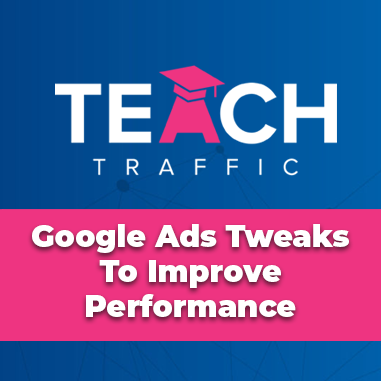10 Tips & Tweaks To Improve Your Google Ads Performance
When it comes to improving the performance of your Google Ad campaigns, there are several tweaks you can make that may have an immediate impact. Here are some suggestions to consider:
- Keyword Optimization: Review your keyword list and identify any irrelevant or underperforming keywords. Remove them or adjust your bid strategy accordingly. Focus on high-intent and relevant keywords to improve your ad targeting.
- Ad Copy Refinement: Craft compelling ad copy that grabs attention and clearly communicates your value proposition. Experiment with different headlines, descriptions, and calls-to-action to find what resonates best with your audience. Highlight unique selling points and use strong, action-oriented language.
- Ad Extensions: Utilize ad extensions to provide additional information and improve the visibility of your ads. Extensions like sitelinks, callouts, and structured snippets can enhance your ad’s appeal and drive more clicks.
- Bid Adjustments: Analyze your campaign data and adjust your bids to allocate budget more effectively. Increase bids for top-performing keywords and decrease bids for less profitable ones. Leverage bid modifiers for device, location, and audience targeting to optimize performance.
- Quality Landing Pages: Ensure that your landing pages align with the intent of your ads and offer a seamless user experience. Optimize them for relevancy, speed, and mobile responsiveness. A well-designed landing page can boost conversion rates and improve your Quality Score.
- Ad Schedule Optimization: Identify peak performance periods for your campaigns using time-of-day and day-of-week data. Adjust your ad schedule to increase visibility during these high-conversion periods and reduce wasted spend during low-performance times.
- Remarketing Campaigns: Implement remarketing campaigns to target users who have previously interacted with your website or ads. Customize your messaging to re-engage these users and encourage them to convert.
- Audience Targeting: Utilize advanced audience targeting options, such as demographic targeting, in-market audiences, and customer match. Refine your targeting to reach users who are more likely to be interested in your products or services.
- Conversion Tracking and Optimization: Set up accurate conversion tracking to measure the actions you want users to take on your website. Use this data to optimize your campaigns and allocate budget towards the keywords, ads, and audiences that drive the highest conversions.
- Ad Testing: Continually test different ad variations to identify the most effective elements. Test different headlines, descriptions, display URLs, and even ad formats to find what resonates best with your audience. Regularly monitor and optimize your ads based on the results.
Remember, it’s crucial to analyze your campaign data, monitor performance, and make data-driven decisions. What works for one campaign may not work for another, so regularly evaluate and refine your strategies to improve your Google Ads performance.
